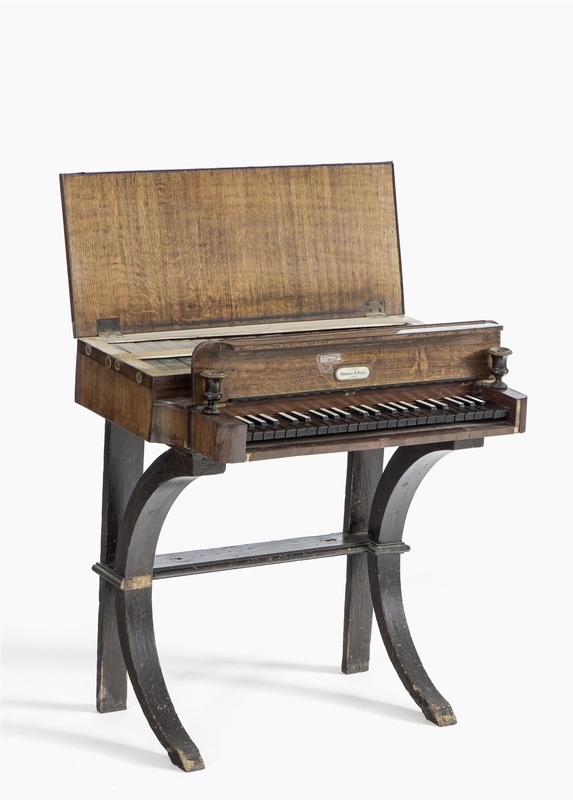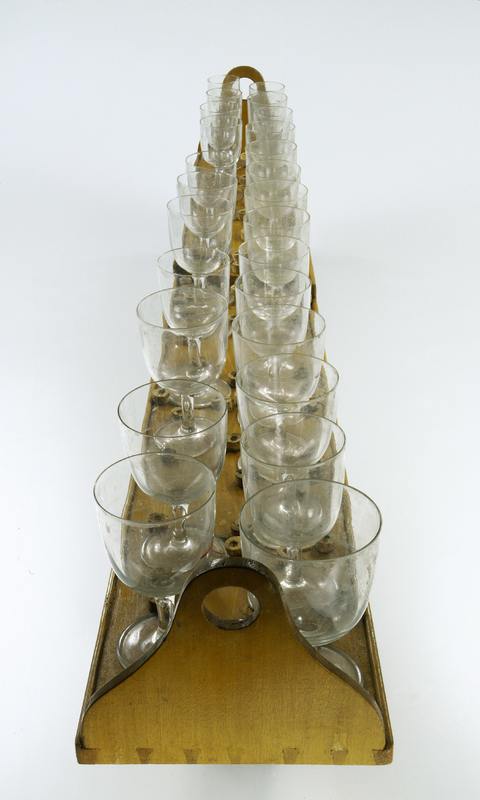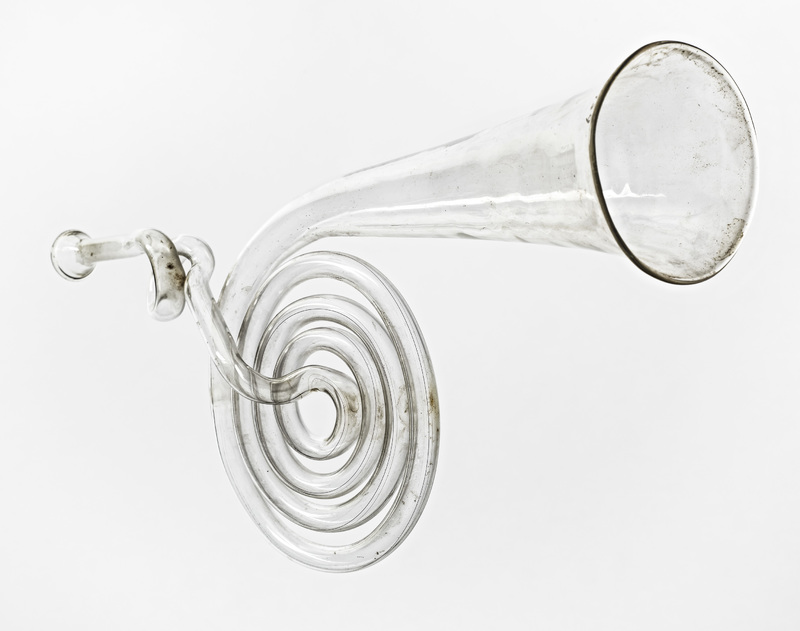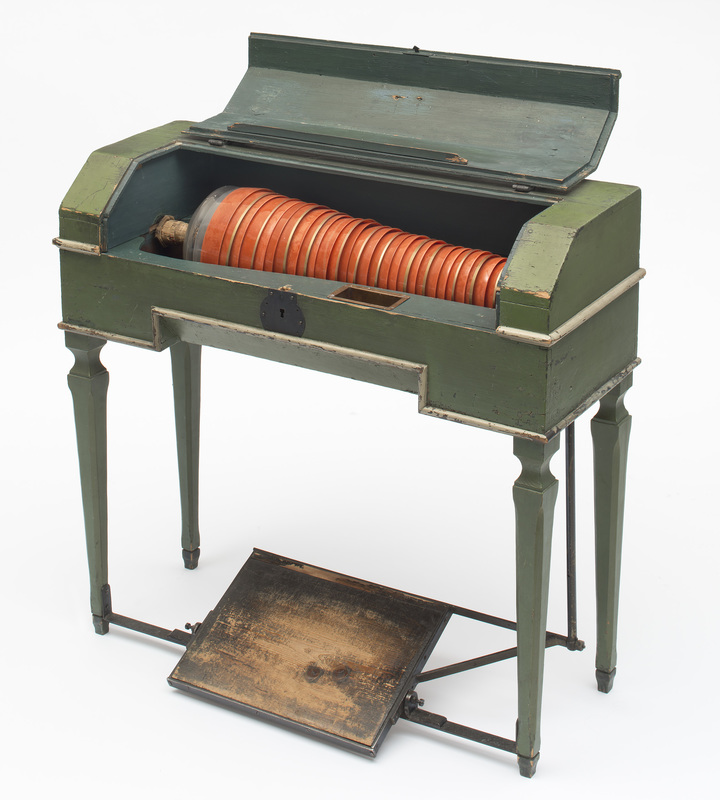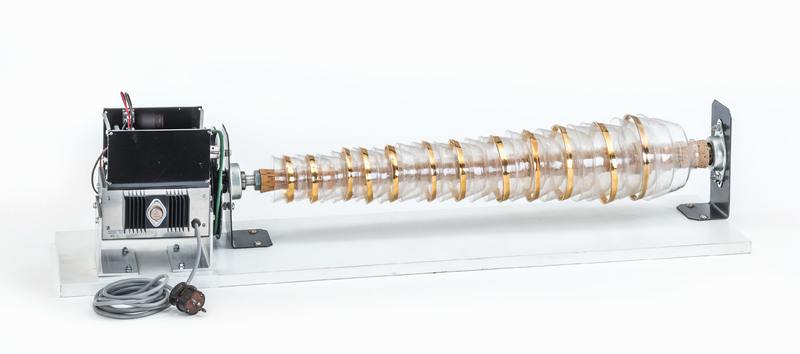Instruments in the collection of the Deutsches Museum
The collection of the Deutsches Museum contains a number of musical instruments that are either made of glass or have glass components, including wind, percussion, friction, and keyboard instruments. They illustrate the astonishing variety of sound production methods available for this material.
A glass plate piano, also called glasschord, with a Viennese action (Inv. No. 45933) dates from around 1820, a verrophone (Inv. No. 2003-27T1) was made around 1900 by Adolf Klinger in Bohemia, and a natural trumpet in b (Inv. No. 65601) dates to the beginning of the 20th century.
The collection includes two glass harmonicas. The older one (Inv. No. 7996) probably originated in Germany and was constructed around 1800; the more recent one (Inv. No. 1988-1) was built in 1983 by Gerhard Finkenbeiner in Waltham, Mass. (USA). The collection also contains two glass flutes. A conical glass transverse flute with 8 keys (Inv. No. 2009-174) was built by Claude Laurent in Paris in 1826; a conical three-part transverse flute with 4 keys (Inv. No. 58531) dates from around 1860 and was made by an unknown workshop. The collection is also supplemented by a clock with glass chimes and pinned barrel (Inv. No. 35905) from around 1800.
Most of these eight instruments are in the depository of the Deutsches Museum. This virtual presentation thus offers a look behind the scenes of the collection.
Six glass instruments were played and recorded for the virtual exhibition with conservational care. The following pages invite you to learn about the instruments, listen to musical pieces, find out more about the playing technique via video and play the instruments yourself in the sampling library. Christoph Reuter and Claudio Albrecht from the University of Vienna created these virtual displays and enriched them with exciting details about the sound characteristics of the instruments. We hope you enjoy yourselves!
Citation: Rebecca Wolf, ‘Glass sounds or the fascination of transparency’, in: Materiality of Musical Instruments. A Virtual Exhibition.

